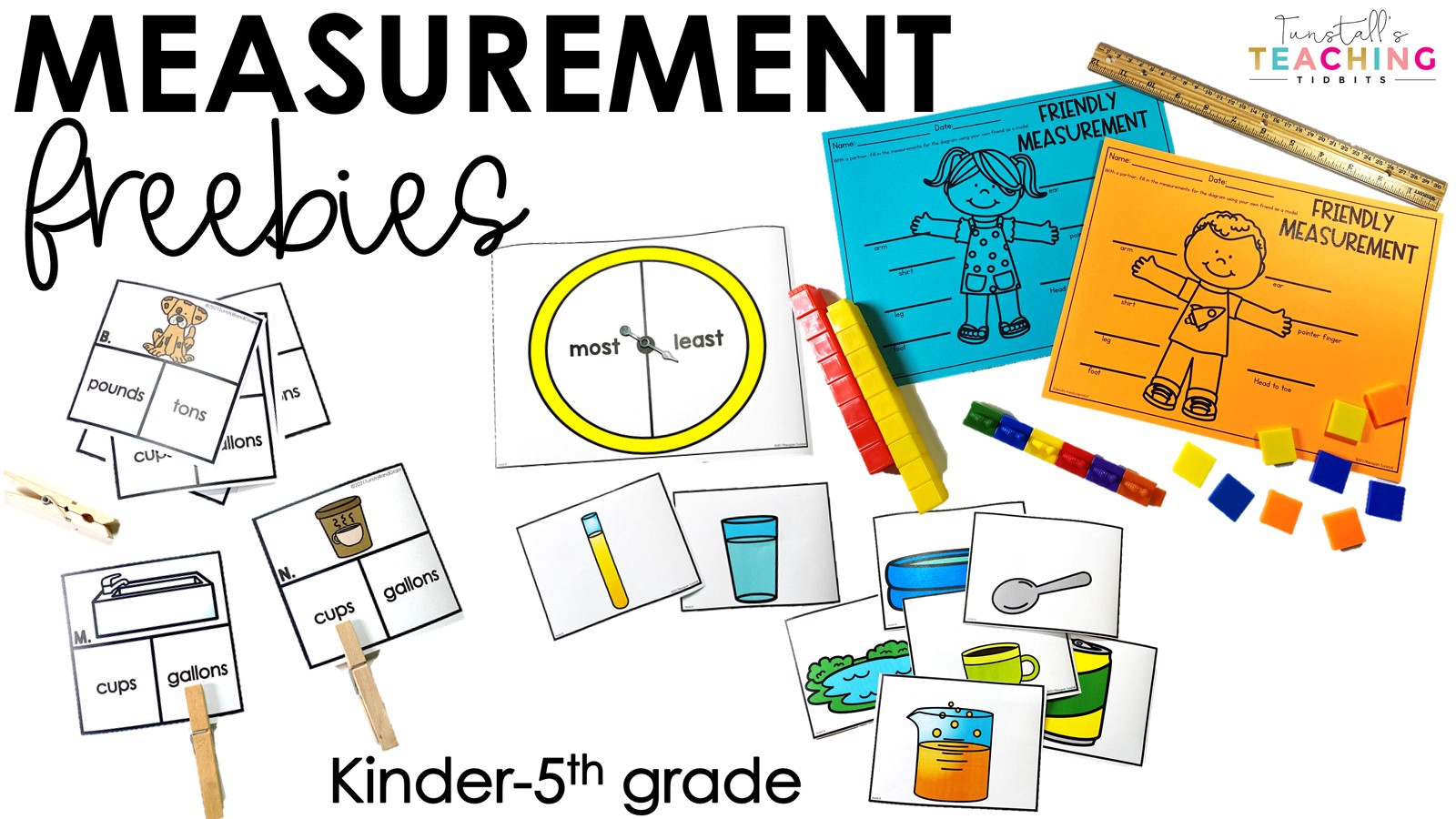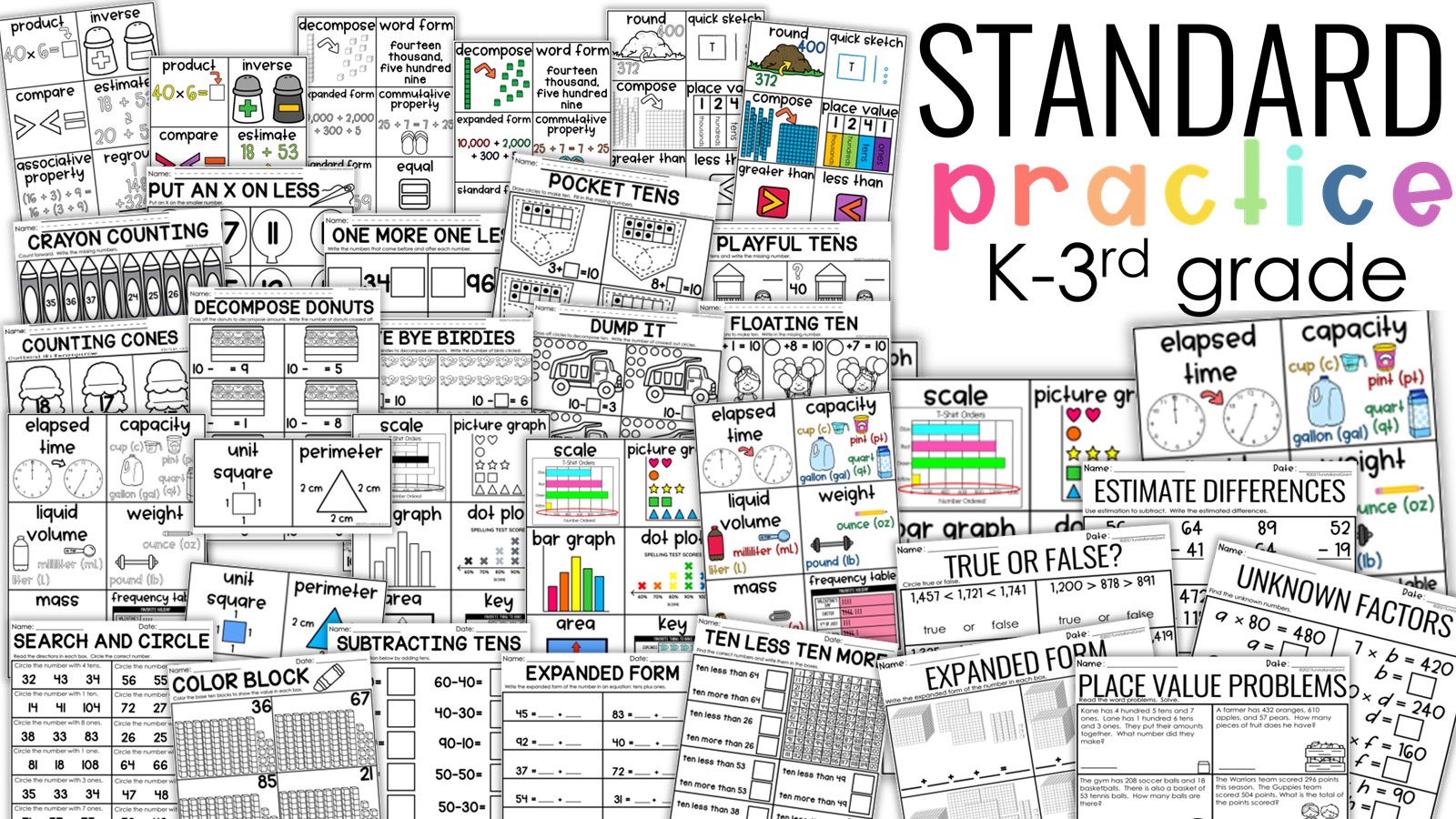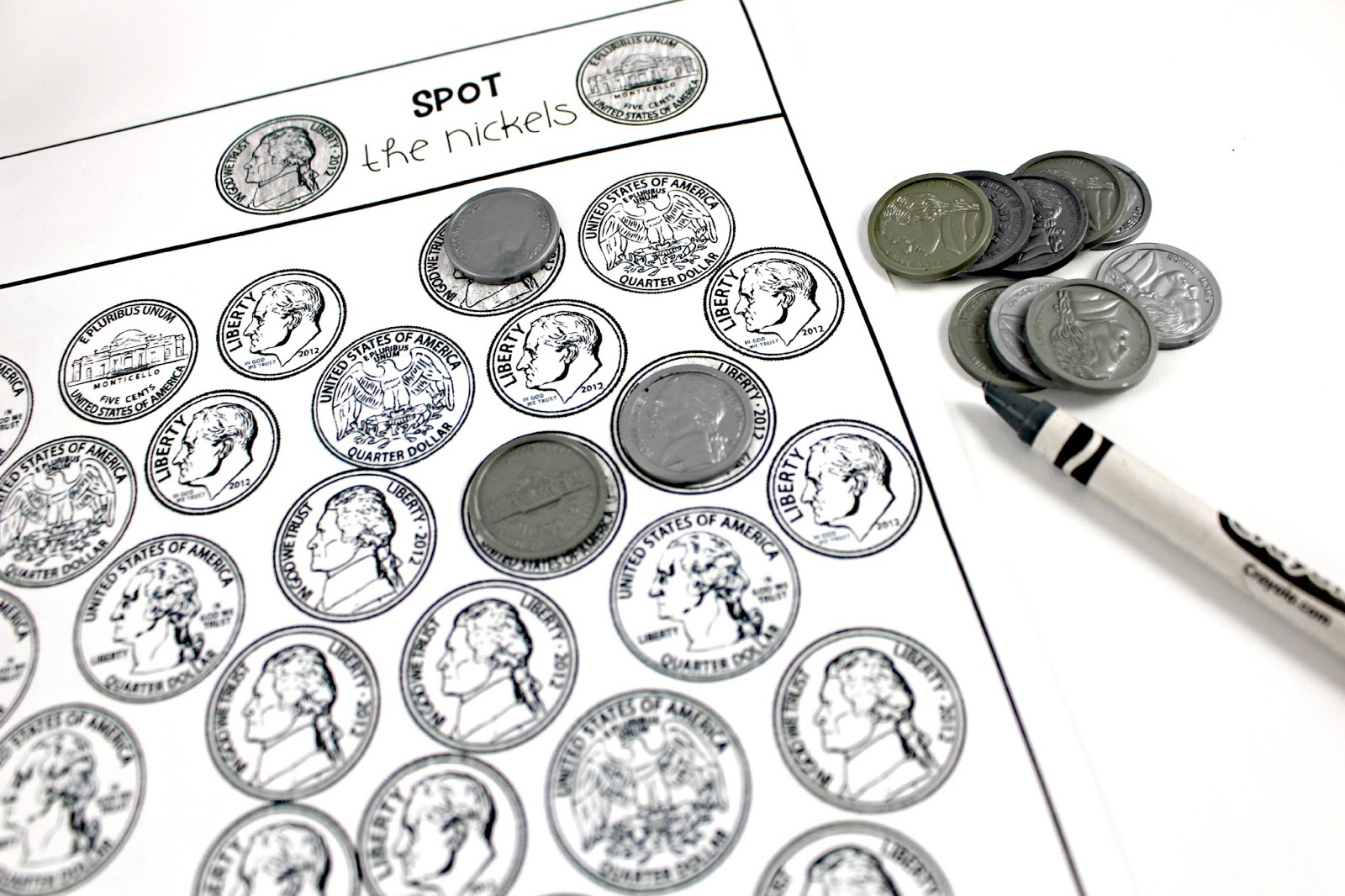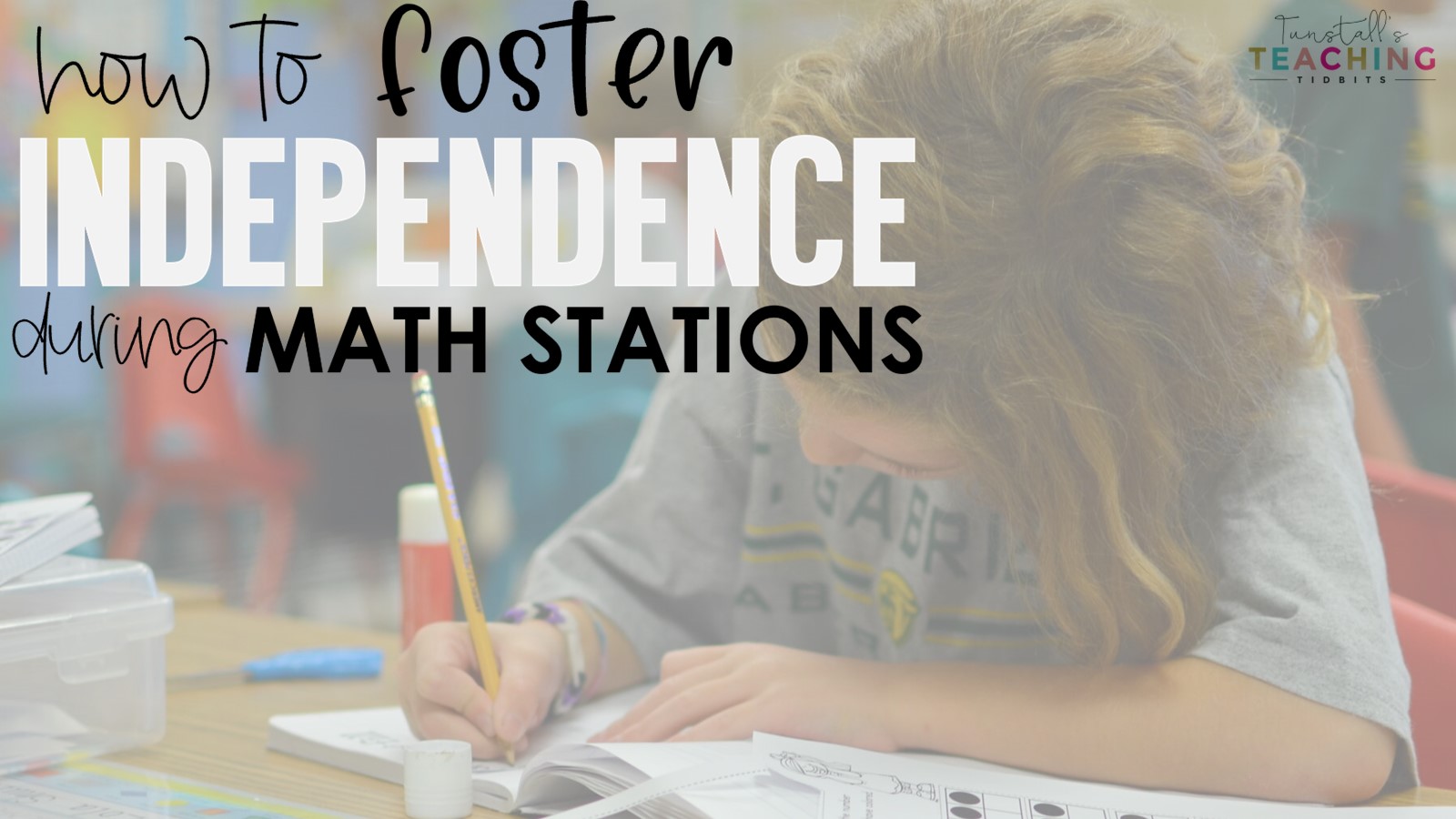5 Tips for Managing Math Centers
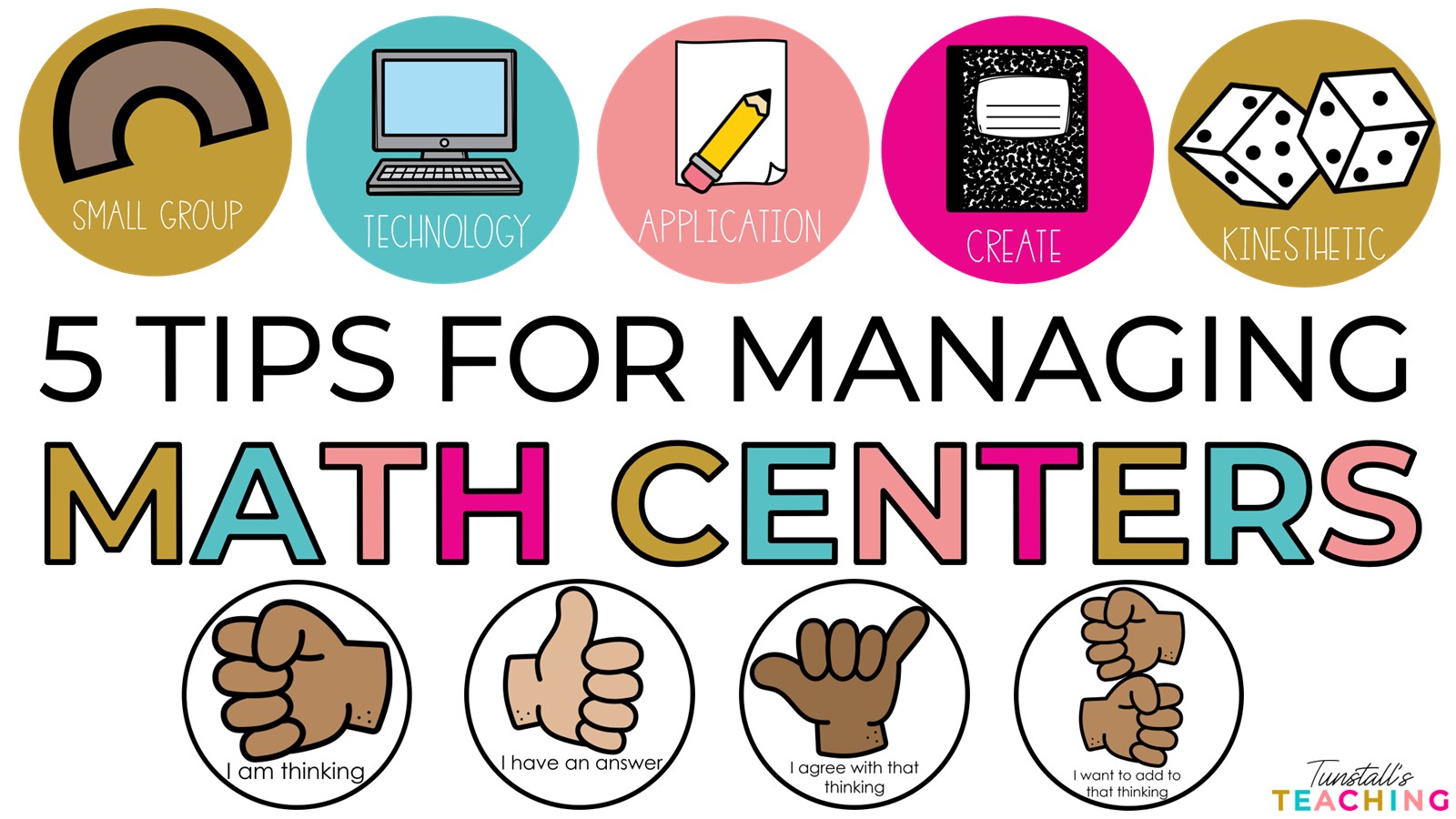
Whether you are a seasoned pro at running elementary math centers or dipping your toes into the abyss of the math workshop, here are some tips to help your math block run like a well-oiled math machine. From our favorite part of the school day to yours, let’s dive into five tips for managing math centers.
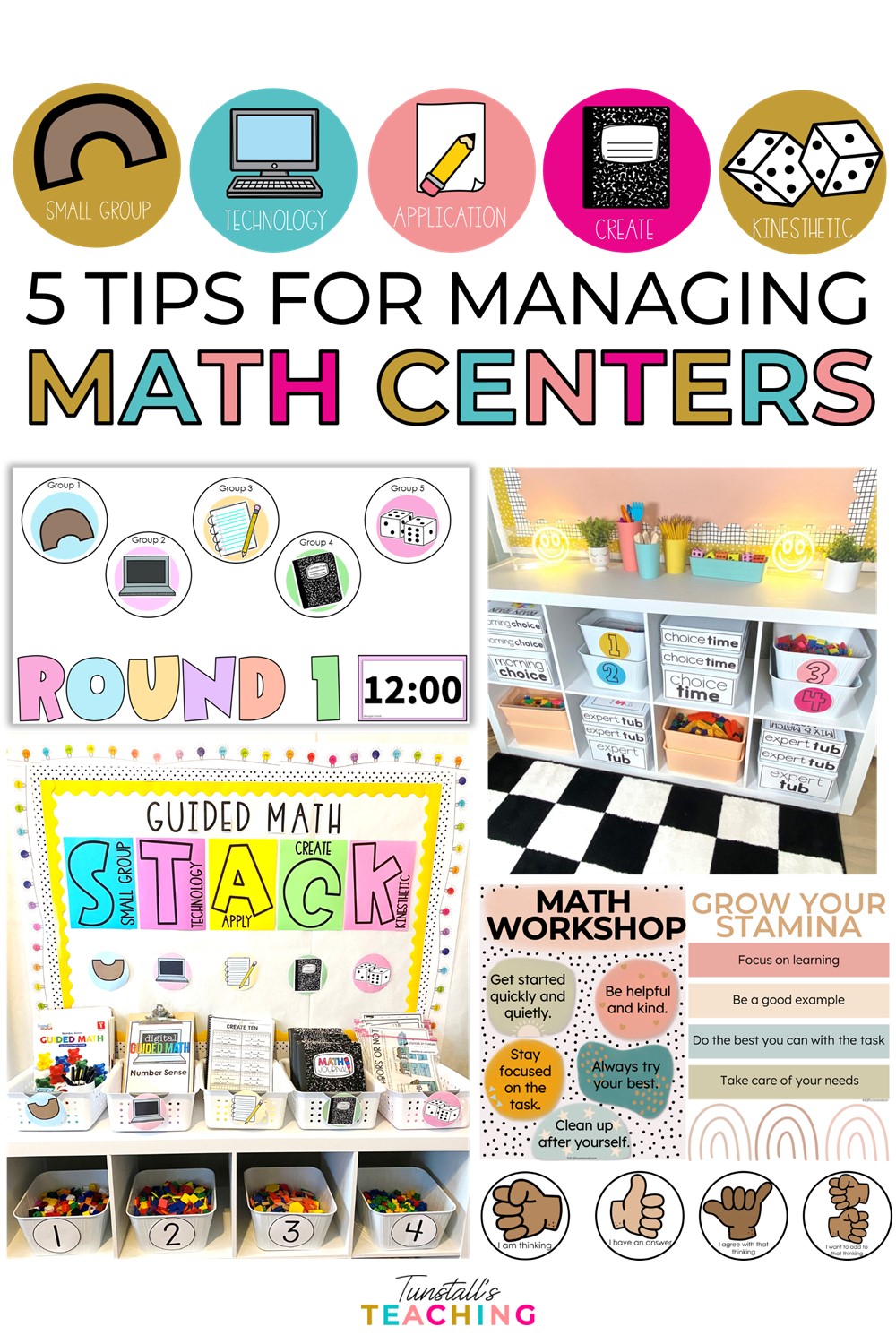
The Purpose of Math Centers
Research states that math workstations or centers are meant to provide ongoing math skills practice in different formats and modalities. Students spend their math minutes authentically doing math for the maximum amount of minutes. This routine allows students to refine skills, make connections, and become more flexible and accurate with computations. Math workstations are spiral reviews of past learning throughout the school year. The ongoing application of math skills from weeks and months past provides the opportunity for students to solidify their skills.
Most importantly, elementary math centers provide the structure for teacher-led small groups. Individualizing math instruction is a proven research-based best math practice. When we have a productive hum in our math centers, we can finally focus on providing our small groups with the valuable content they require.
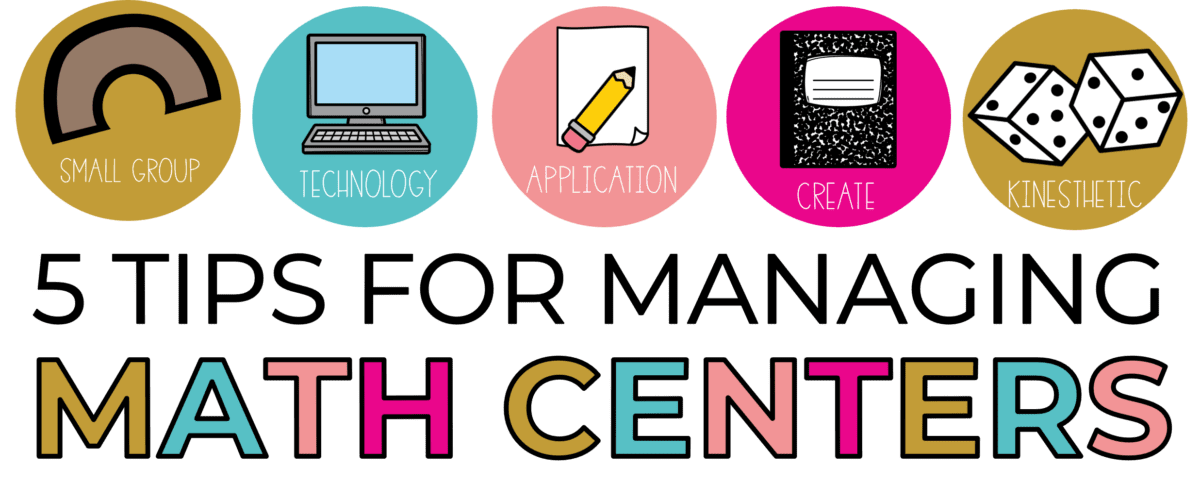
Tip #1 for Managing Math Centers
One Size Does Not Fit All for Math Centers
When we travel to schools for professional development or put on Guided Math PD events, we can see and feel how much some teachers have a love and passion for math centers. We can also feel the resistance and discomfort from those who have avoided implementing math centers at all costs due to the overwhelming management and materials undertaking.
We understand the leap of faith and prep it can take to dive into this structure, and we also know that it has to work for you to be successful. So, let’s keep it simple and then layer on as we feel ready! How you carry out this time of your school day can and should be unique to you and the students in the room. These tips are jumping off points.
Let’s start with having students do one station per day while we teach one teacher-led small group lesson per day. While we would like to see all students each day, it may not be possible to dive into this all at once while we build up our math station resources.
This post shares some different levels of implementation and can be of help if you aren’t sure where to start when it comes to organizing math centers.
Tip #2 for Managing Math Centers
Use a clear management system
Below, you’ll find information on the two main management systems used for Guided Math or Math Workshop in the classroom: Student-Paced Stations or Rotation of Stations.
Self-Paced Centers Management
The self-paced management system provides a certain number of days and tasks but allows students to navigate the order and time spent completing the tasks within the days given. Students have a way of staying accountable for the tasks being completed either on a digital choice board, math menu or through a simple moving of a clip to a bucket or bin for the youngest mathematicians.
This post below goes into more detail on how the math menus or choice boards may be put together. Remember, less can be more. If you need just a few activities for the week, don’t feel any pressure to have more than one a day as you get this up and running.
Math Rotation System
The math rotation system is a more structured approach to running elementary math centers. Here, students move through a predictable pattern or series of activities. In groups, students rotate through a carousel of math activities. The teacher-led small group can be one of the stops in the rotation, or it can be apart from the rotation. If separate from the rotations, the teacher calls students out of their center activities to meet for small group instruction.
Below is a blog post sharing our Math STACK acronym, a free download for you with all the icons and labels to get organized and set up in your own classroom. Feel free to use just part of it or go all in.
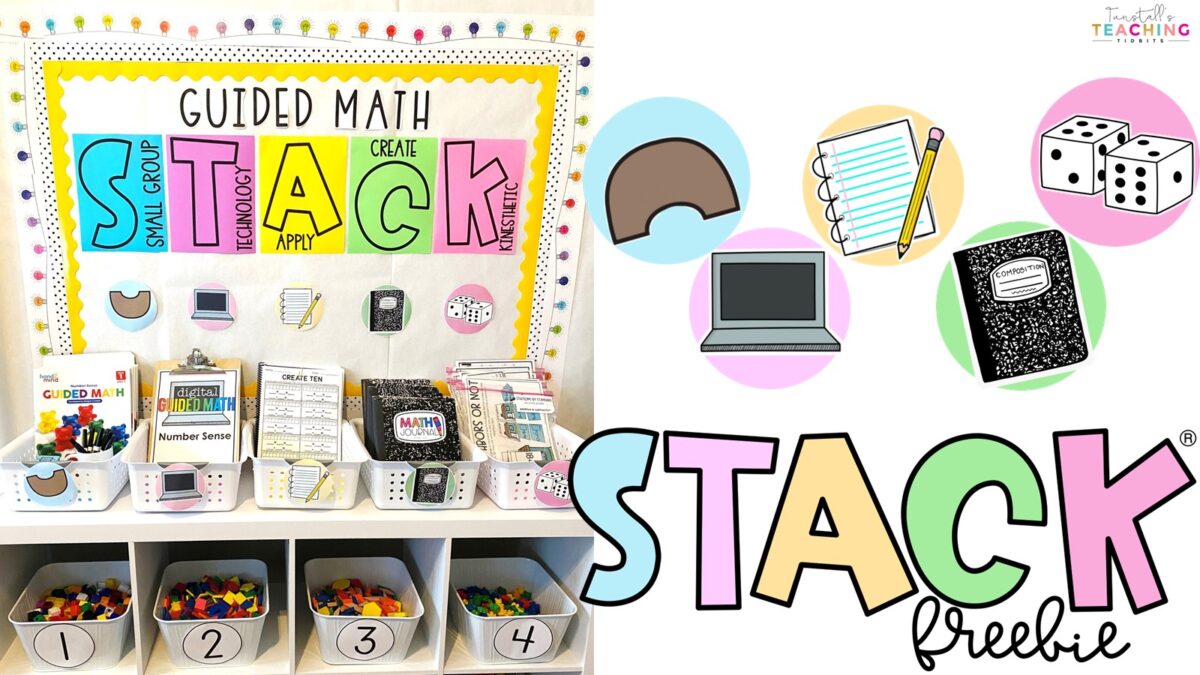
If you love to use timer slides to organize your math workshop, these customizable Math timers are fully editable and help you build the math block out to perfection.
Tip #3 for Managing Math Centers
Math centers time follows a consistent and predictable routine
When we expect students to take on math tasks independently, setting them up with a predictable routine builds confidence and autonomy within our mathematicians. If you’ve been here before, chances are you’ve heard us talk about our math STACK routine. This is our predictable, stable math routine. Not only does STACK provide consistent station activities, but it also provides the management flow of our time. The post below shares our math STACK routine. It’s always best that you design the flow of your stations and the choices within, knowing the students and what works best. If any of these ideas aren’t a perfect fit, that’s okay!
Tip #4 for Managing Math Centers
Inspect what you Expect
Before you involuntarily roll your eyes at that statement, I wouldn’t blame you… It’s easy to say what we want to our students, but it’s not always easy for students to know exactly what we mean. I’ll admit I live at the helm of the teacher table during math centers and sometimes, I can check out on what is happening on the opposite end of the classroom. For this reason, I started popping up and taking a lap during stations to be more present to all students out at workstations.
Along my 30-second walk, I snap some pictures to use as future expectations setting. When sharing praise reports, I show students a photo of what wonderful expectations are being met. Each time this is done, students gain an important visual explanation of what the expectation looks like. This is a terrific routine for two reasons: one, students know you may unexpectedly circulate the classroom at any time, and two; there is a clear understanding of all aspects of math center expectations. Each day, I focus on something equally important such as handling materials, high-quality work, positive interactions, stamina, and the list goes on.

Tip # 5
Share the Responsibility
For math centers to really run smoothly all through the year, everyone should have full autonomy on materials, movement, expectations, and, most importantly, the work! In order to really share this responsibility with our students, we label everything. We label our stations, we label our manipulatives, we label our expert tubs, and we also provide posters of these math workshop expectations. Students should be able to easily explain and navigate math center time.

All of the labels below are free. No matter how you run math centers, these labels will help you master the management of the room.
Guided Math Lessons and Centers
If you are ready to jump into math centers or just need that validation that you are, in fact, killing it in your math block, we are here for you! We love hearing and seeing what you are doing for your students. Below we will leave you with two more important posts. One can fill in any missing areas of content you need for lessons and centers, and the other can help walk you through organizing math centers at any time of the year.

 Contact Us
Contact Us
